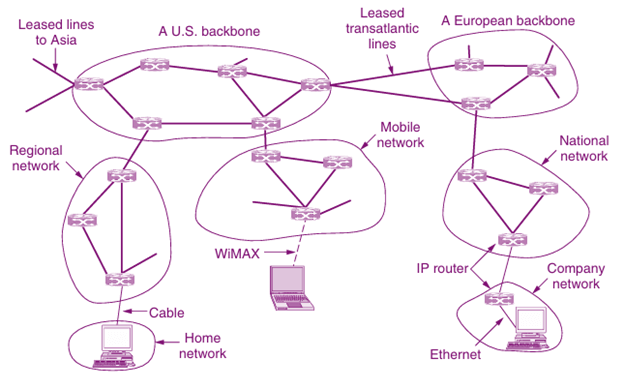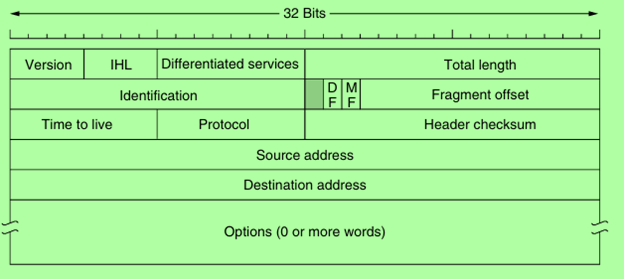The Network Layer in the Internet
The network layer is a fundamental component of the Internet, responsible for facilitating communication between devices across diverse networks. Understanding its design principles, protocols, and functionalities is crucial for anyone interested in networking. This article explores the key aspects of the network layer, including its guiding principles, the Internet Protocol (IP), associated protocols like ARP and DHCP, and the role of mobile internet.

Key Principles of Network Layer Design
The design of the Internet’s network layer is guided by several core principles, as outlined in RFC 1958. These principles emphasize simplicity, reliability, and flexibility, ensuring that the network can adapt to various conditions and requirements. Here are the top ten principles:
Ensure Functionality: Before finalizing any design, multiple prototypes must successfully communicate. Avoid lengthy standards that may prove flawed.
Simplicity is Key: Opt for the simplest solution when faced with design choices. Avoid unnecessary features that complicate the system.
Make Clear Choices: Choose one method for accomplishing tasks to prevent confusion and complications.
Exploit Modularity: Design protocol stacks where each layer operates independently, allowing for easier updates and changes.
Expect Heterogeneity: The network must accommodate various hardware, transmission methods, and applications.
Avoid Static Parameters: Allow for negotiation of parameters rather than enforcing fixed options.
Prioritize Good Design: Focus on a solid design rather than striving for perfection, which can lead to unnecessary complications.
Be Strict in Sending, Tolerant in Receiving: Ensure outgoing packets adhere to standards while being flexible in handling incoming packets.
Consider Scalability: Design the network to handle millions of hosts without relying on centralized databases.
- Balance Performance and Cost: Ensure that the network is both efficient and cost-effective to encourage widespread use.
The Role of the Internet Protocol (IP)
At the heart of the network layer is the Internet Protocol (IP), which serves as the glue connecting various networks. IP is designed for internetworking, providing a best-effort method for transporting packets from source to destination, regardless of the underlying network structure.
IP Version 4 (IPv4)
IPv4 is the most widely used version of IP, consisting of a header and a payload. The header includes essential information such as source and destination addresses, packet length, and fragmentation details. Key features of IPv4 include:
Header Structure: The IPv4 header is 20 bytes long, with fields for version, header length, differentiated services, total length, identification, time to live (TTL), protocol, header checksum, source address, and destination address.

_The IPv4 (Internet Protocol) header Fragmentation: IPv4 supports packet fragmentation, allowing large packets to be broken down into smaller pieces for transmission across networks with varying maximum transmission units (MTUs).
IP Addresses
IPv4 addresses are 32 bits long and are typically represented in dotted-decimal notation (e.g., 192.168.1.1). Each address consists of a network portion and a host portion, allowing for hierarchical addressing. This structure enables efficient routing and reduces the size of routing tables.
Network Address Translation (NAT)
As the demand for IP addresses has surged, Network Address Translation (NAT) has emerged as a solution to address scarcity. NAT allows multiple devices on a local network to share a single public IP address. It translates private IP addresses to a public address when packets exit the network, enabling efficient use of available addresses.
Benefits and Drawbacks of NAT
While NAT helps alleviate address shortages, it introduces several challenges:
End-to-End Connectivity: NAT can disrupt the end-to-end connectivity model of the Internet, making it difficult for external hosts to initiate connections to devices behind a NAT.
Protocol Compatibility: Some applications, such as FTP, may not function correctly with NAT due to the way they handle IP addresses and ports.
IP Version 6 (IPv6)
To address the limitations of IPv4, IPv6 was developed, featuring 128-bit addresses that provide an effectively unlimited supply of IP addresses. Key improvements in IPv6 include:
Simplified Header: The IPv6 header is streamlined, containing only seven fields, which enhances processing speed.
Enhanced Security: IPv6 incorporates built-in security features, including authentication and encryption, to protect data during transmission.
Quality of Service (QoS): IPv6 offers improved support for QoS, making it suitable for real-time applications like video streaming and VoIP.
The Rise of Mobile Internet
With the proliferation of smartphones and mobile devices, mobile internet has become a significant aspect of the network layer. Mobile internet allows users to access the Internet on the go, providing connectivity anytime and anywhere. This section explores the importance of mobile internet, its challenges, and how it integrates with the network layer.
Importance of Mobile Internet
Mobile internet has transformed how people communicate, work, and access information. It enables:
Ubiquitous Connectivity: Users can stay connected to the Internet regardless of their location, facilitating real-time communication and access to services.
Enhanced User Experience: Mobile applications leverage the network layer to provide seamless experiences, from social media to online banking.
Economic Growth: The mobile internet has spurred innovation and economic opportunities, particularly in developing regions where traditional infrastructure may be lacking.
Challenges of Mobile Internet
Despite its advantages, mobile internet faces several challenges:
Network Reliability: Mobile networks can experience fluctuations in signal strength and connectivity, impacting user experience.
Latency and Speed: Mobile connections may have higher latency and lower speeds compared to wired connections, affecting applications that require real-time data transmission.
Security Concerns: Mobile devices are often more vulnerable to security threats, necessitating robust security measures at the network layer.
Integration with the Network Layer
Mobile internet relies heavily on the principles and protocols of the network layer:
Dynamic IP Addressing: Mobile devices often use DHCP to obtain IP addresses dynamically as they connect to different networks, ensuring seamless connectivity.
NAT and Mobile Networks: Mobile carriers frequently use NAT to manage IP address allocation efficiently, allowing multiple devices to share a single public IP address.
IPv6 Adoption: As the number of mobile devices continues to grow, the transition to IPv6 is crucial for providing sufficient IP addresses and improving connectivity.
Internet Control Protocols
In addition to IP, several control protocols operate at the network layer, including:
ICMP (Internet Control Message Protocol): ICMP is used for error reporting and diagnostics, allowing routers to communicate issues back to the sender.
ARP (Address Resolution Protocol): ARP maps IP addresses to MAC addresses, enabling devices to communicate over local networks.
DHCP (Dynamic Host Configuration Protocol): DHCP automates the assignment of IP addresses and other network configuration parameters, simplifying network management.
Conclusion
The network layer is a vital component of the Internet, ensuring that data can be transmitted efficiently and reliably across diverse networks. By adhering to key design principles and utilizing protocols like IP, NAT, and DHCP, the network layer facilitates seamless communication between devices. The rise of mobile internet further emphasizes the importance of a robust network layer, as it adapts to the growing demands of users and applications worldwide. Understanding these concepts is essential for anyone looking to navigate the complexities of modern networking.
